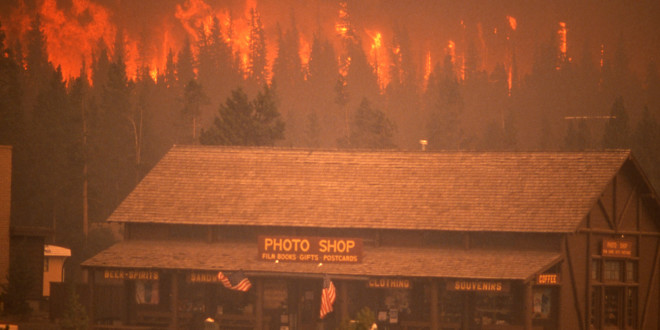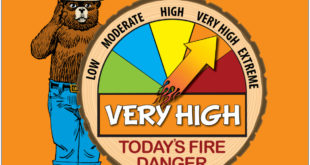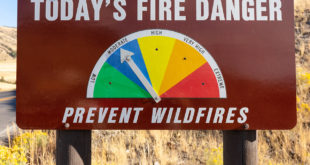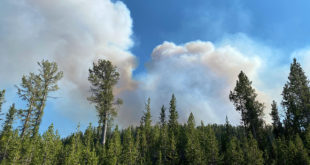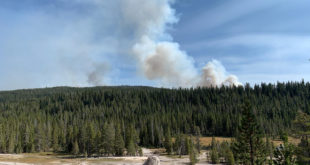It seems hard to believe, but 1988’s Yellowstone fires are all of sudden 30 years ago. “Sometimes it seems like 30 weeks,” Roy Renkin, a park biologist and vegetation researcher said recently.
Renkin has been with the National Park Service in Yellowstone since 1978. This is his 40th summer season.
Renkin has worked on Yellowstone fires issues for many of those 40 years. Not only was he working in the park in 1988, but he has conducted ongoing research into how forests re-grow after a fire.
Renkin has studied the regrowth of the park’s forests since 1989. During the 1988 fire season, he established plots throughout the park in the fire’s path that he continues to check in on periodically to this day.
“It was an opportunity for long-term information,” he said.
The plots, about 16 of them, measure 15 by 25 meters. Plants on the plots have re-grown at different rates and with differing types of plants throughout the years, he said.
Some areas had 100 percent ground cover in 1989. Other areas had 5 to 8 percent ground cover.
One plant that did well in the initial summer after the fires was a flowering plant called fireweed. In the early post-fire years, fireweed covered up to 70 percent of some plots. But it eventually settled down to 8-12 percent, Renkin said.
Lodgepole pine trees evolved with fire. The trees produce two types of pine cones, one of which is called a serotinous cone, which opens and distributes seeds only after high temperatures cause the cones to open. After the fires of ’88, the seed counts per acre varied between 15,000 and 2 million seeds per acre.
The biggest driver in how quickly a burned area re-forested was the number of serotinous pine cones in the pre-burned forest, Renkin said. Most of the trees that burned in ’88 were mature lodgepoles ranging between 150 and 200 years old. In 1989, new trees ranged between tens of trees per acre to 50,000 per acre. But the new trees were only 2 centimeters tall that first post-fire summer, he added.
New fire in a previously burned area
Renkin had the unique opportunity in 2016 to study a recently burned area that had previously been burned in 1988. The fire, named the Maple Fire, burned in a region of Yellowstone roughly northeast of the town of West Yellowstone, located at the park’s west entrance.
The young lodgepole pines of the Maple Fire were 8 to 10 feet tall, Renkin said, with a lot of deadfall underneath on the ground. If the deadfall is wet and the trees are green, a forest isn’t going to burn, he added. But with dry conditions and high winds, fires can travel through the crowns of trees. And, at this particular point in the forest’s lifespan, it’s a relatively short distance from the ground to the crown, and the deadfall contributes to a fire’s intensity. But as the trees get taller, it will be more difficult for a fire in the deadfall to make the jump into the crown, he said.
And getting to watch fire behavior in a forest that is only decades old rather than centuries, has been “really interesting,” Renkin said.
Any thoughts on this year’s Yellowstone fire season?
“Looking into the crystal ball…,” Renkin joked, he added that an early fire season looks very unlikely. Dead and live fuels are very moist, with moisture contents of 30 percent or so.
“It’s wet out there,” he said.
But if the precipitation stopped falling, “with three weeks of dry, windy weather we could get to a threshold level that would support fire… If we dry out, we could come into a fire season later in August,” Renkin said.
Of his 40 years in Yellowstone, Renkin, originally from the PIttsburgh area, says, “it’s been an interesting ride” following fire over time, but he doesn’t expect to see another fire season like in 1988.
Photo courtesy National Park Service.
 Yellowstone Insider Your Complete Guide to America's First National Park
Yellowstone Insider Your Complete Guide to America's First National Park
